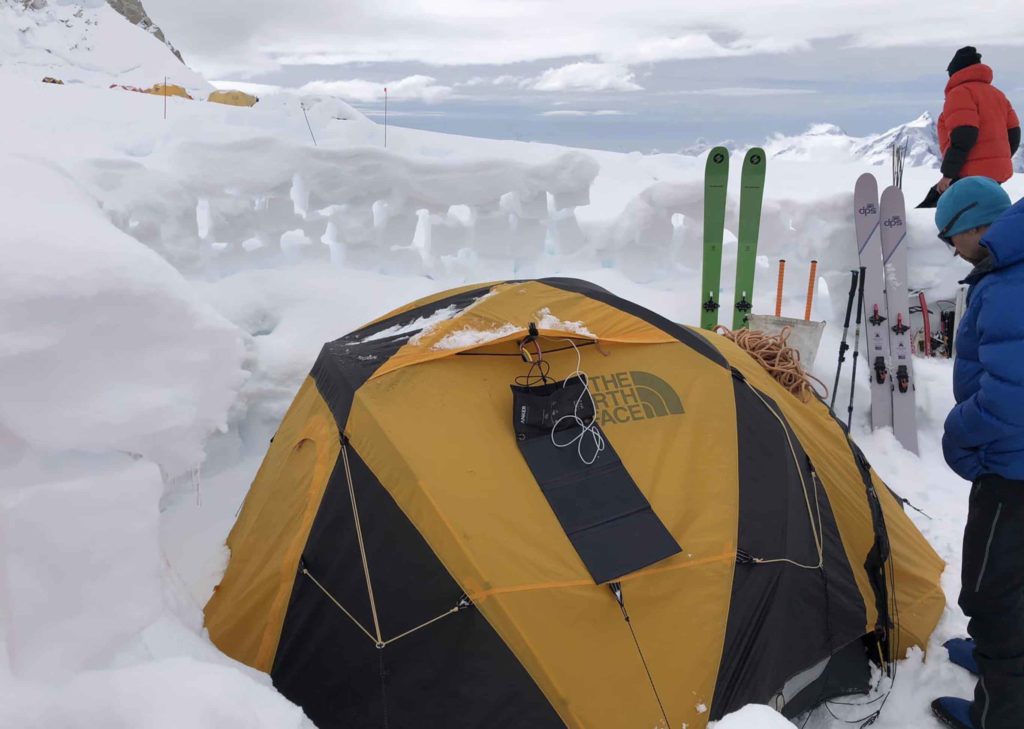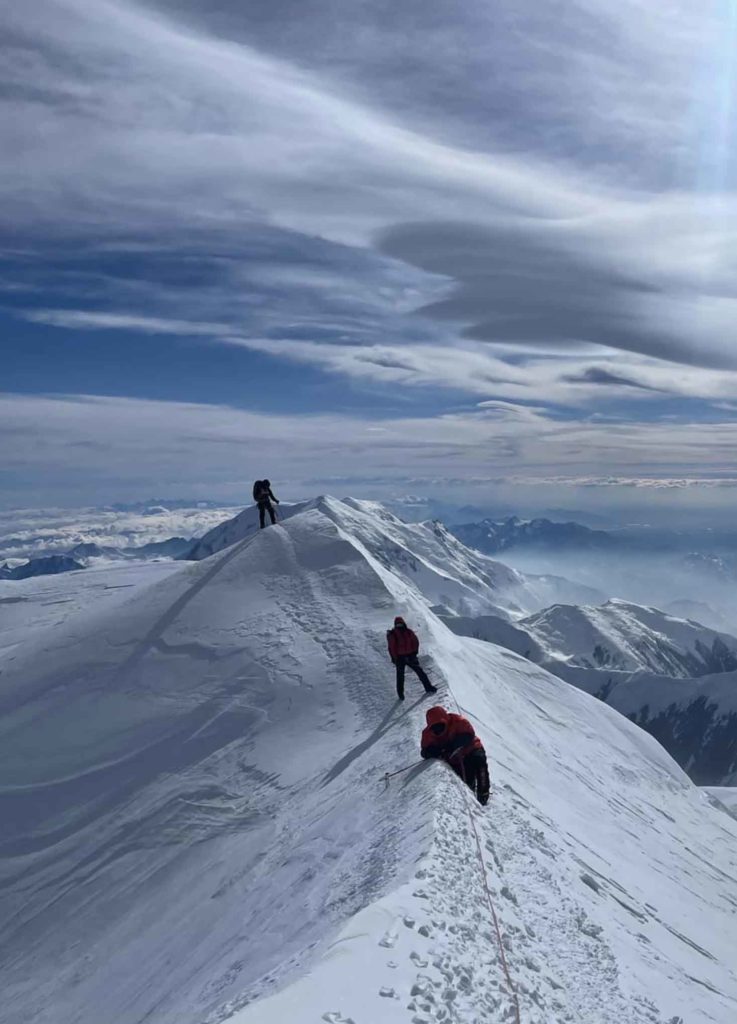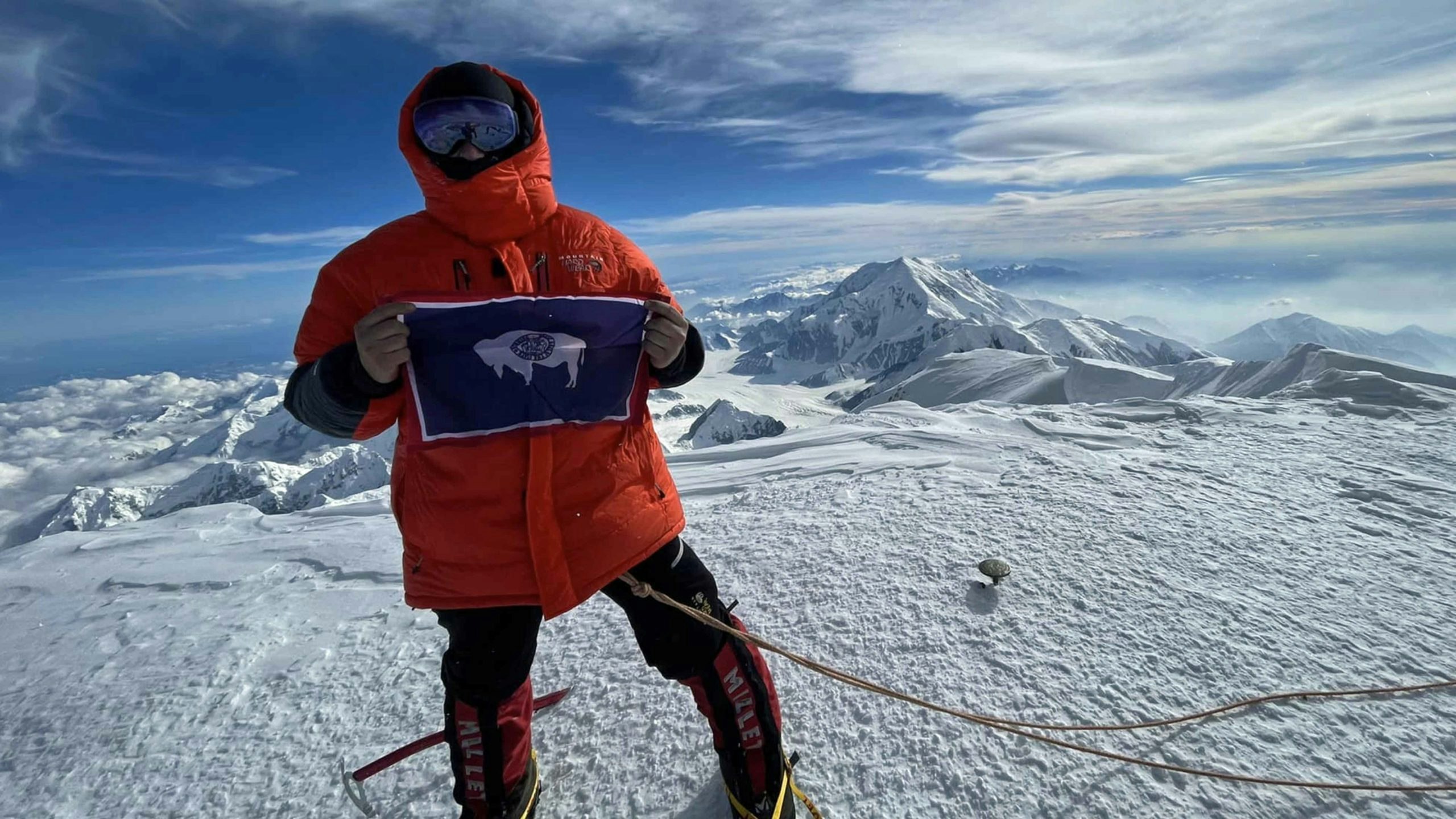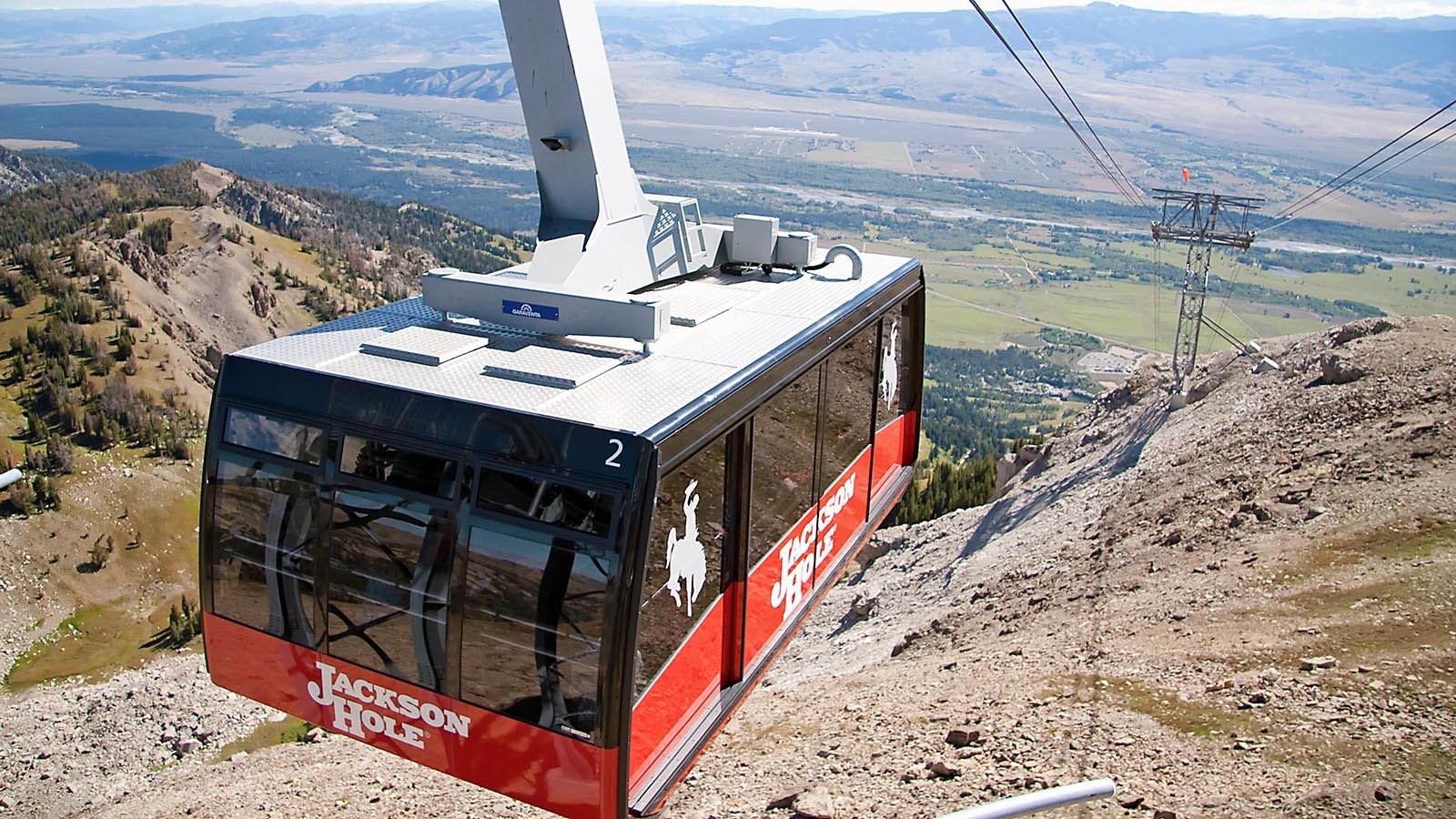**For All Things Wyoming, Sign-Up For Our Daily Newsletter***
It’s not the highest peak, but it’s more difficult.
Casper Dr. Joe McGinley last month summited the highest mountaintop in North America and although Denali isn’t the highest peak in the world, it is one of the toughest to climb.
For McGinley, a sports medicine physician and founder of McGinley Orthopedics, summiting a peak is nothing new.
His latest conquest, though, marks the fifth time he’s summited the highest peak on a new continent. Although he’s got two more to go, that’s not his focus for now. It’s on savoring the Denali quest and recovering.
Express Route
After all, McGinley took the express route up to Denali. The normal trekking time to Denali’s top is between 17 and 23 days. McGinley did it in five and one-half . His schedule, and those of his two teammates, didn’t allow them to take a more “leisurely” trip. They needed to get it done and done fast.
And to make it even more difficult, there’s no help. Unlike a trek up Everest, there are no sherpas. It’s the team of climbers and that’s it. In McGinley’s case, it was just him and two friends.
“I can barely walk,” McGinley said from his home in Casper. “But the reward is the absolute beauty, the glaciers, the colors, being above the clouds and seeing mountain ranges as far as your eyes can see.
“The sensory overload of the natural beauty was just incredible,” McGinley continued, describing the sensation of feeling the ground rumble from avalanches and the collapse of seracs — blocks or columns of glacial ice — even though they were hundreds of miles away.


Preparation
McGinley said his latest conquest was the most difficult athletic feat he’s ever accomplished from both a technical and conditioning standpoint.
To prepare himself for the high altitudes he put a tent over his bed at home in February which lowered the oxygen level while he slept.
“It was the opposite of a Michael Jackson hyperbolic chamber,” he said, explaining that oxygen was being taken away rather than added.
By the time he was ready for the climb, he was already sleeping at a simulated altitude of 19,000 feet.
“It takes a lot of commitment, a lot of sacrifice, and use of technology to acclimate so I would have no problems with the altitude at the summit,” he said.
“It worked,” he said nonchalantly.
No headaches, no altitude sickness. Fatigue, yes. But that was to be expected. He fared well because he planned well.


Adaptation
There are long-term adaptations a climber can prepare for and then there are the short-term. Like how quickly the climate changes
At base camp, it’s 40 degrees and because of the reflection of the sun off of the snow, it’s hot.
“You actually feel like you’re cooking,” McGinley said. “You’re literally in shorts and a T-shirt on a glacier and you’re sweating.”
But that sensation didn’t last. He and his team waited until the temperatures were low enough that they could walk across the glaciers over the crevasses. That meant a 3 a.m. departure.
Using skis to minimize the chances of falling through the glacier, they trekked five miles across the glacier field. It was nerve-wracking because at times they could see how far the drop was.
“We couldn’t see the bottom and you’re just hoping that the six inch snow bridge holds up as you go across,” he said.
After a while though, he said he got used to it and the heights didn’t bother him, despite knowing that a fall would have ended his climbing career, not to mention his life.
Then came the wind, the falling rocks, and the ice wall. The 2,000 foot vertical ice wall was always looming.
“You’re just watching the climbers each day knowing that it’s coming and you’re going to have to climb it with a 60-pound backpack attached,” he said.


“Always A Surprise”
It’s not like it’s a vacation after the ice wall is crested.
“There’s always a surprise beyond Denali,” he said.
McGinley then described places like the autobahn, the football field, and Pig Hill, all unique areas where if a climber is not careful, it’s all over.
Take the autobahn. If you slip there, take solace in that you’re not airborne, but you’re sliding down the mountain at “full speed” until something “stops you.”
At each level it gets more difficult, McGinley said.
Ironically, he described the hardest part of the climb as “not the simplest thing” before calling it “brutal.”
That’s because the location tricks you. You think you’ve summited once you go past the ice wall. But you still have farther to go.
“It’s literally a snow-packed ice ridge with wind all the way to the summit,” he said. “It is by far the most mentally intimidating thing that I’ve ever done.”
He didn’t want to leave once he summited. So he took photos and savored the experience for as long as he could.


“Seeing Stars”
“So you do all that and then you take it back down,” he said with a laugh.
McGinley groaned as he discussed carrying all the supplies back down to the bottom.
“I felt pain like I’ve never felt before,” he said. “I mean, I literally was seeing stars.”
He said he always thought that was just a saying, but his feet were “so destroyed” that every step he took, he said, he saw stars.
What’s Next
It’s understandable that he wasn’t interested in talking about what is next, but said McGinley has heard the question because he’s got two peaks to go to hit the highest peaks on every continent.
“Antarctica is next,” he said. “I take them one at a time and then we’ll see how it goes.”
Mount Vinson is the highest peak in Antarctica and while it isn’t a technically difficult climb, the cold weather makes it dangerous. Temperatures can dip to 40 degrees below zero on the summit on Mount Vinson.
McGinley says he is shooting for January or February of 2023 to make that trek. And to make it more interesting he said he would be skiing to the South Pole as well.
After then, Everest is a possibility.
“I don’t want to make assumptions or be arrogant about this. And I want to take them one at a time,” he said. “If I’m successful in Antarctica, we’ll talk about Everest.”
Whether he does it or not, McGinley said so far it’s all been worth it, despite the pain.
“These are once-in-a-lifetime adventures and the places are always stunning,” he said.


**For All Things Wyoming, Sign-Up For Our Daily Newsletter***





